For soldiers wounded in No Man’s Land during World War I, the appearance of Mercy dogs was a significant joy, as gentle nudges and warm licks meant that help was on the way.
These dogs scoured the battlefields after combat to search for soldiers in need of assistance. Most rescue dogs carried medical supplies on their backs; some were even required to wear gas masks. Upon finding a severely wounded soldier, they would attempt to retrieve a piece of his uniform and then run back to camp to seek help.
Sometimes they would find soldiers who were barely alive, and they would stay by their side, providing moments of comfort and companionship until the soldier passed away.
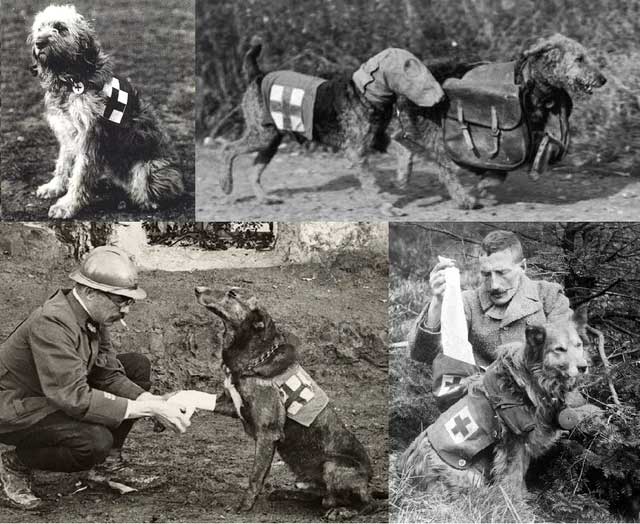
How the military began using Mercy dogs.
Humans have used dogs in warfare for thousands of years. Ancient Egyptian murals depicted dogs in battle, and documents written by ancient Greeks also mentioned dogs “dressed in armor” during warfare.
However, for modern times, the idea of using rescue dogs in war only began to take shape around 1890. A dog lover and German painter named Jean Bungartz established the Deutschen Verein für Sanitätshunde, or the German Association for Medical Dogs. He envisioned trained dogs that could assist in locating injured soldiers.
In 1895, Lieutenant Colonel Edwin Richardson encountered a man buying dogs in England to transport back to Germany.
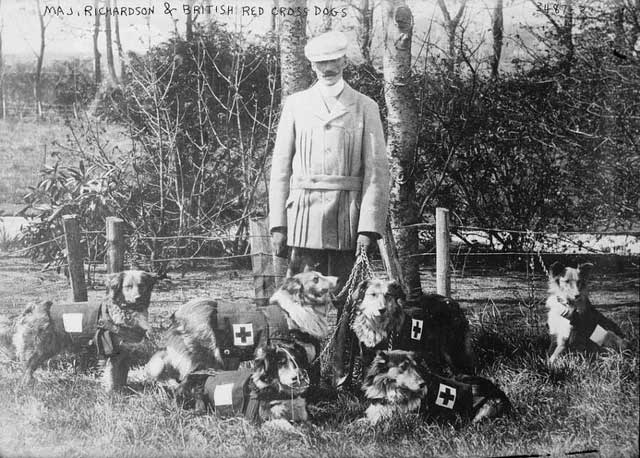
The idea of using rescue dogs in warfare only began to take shape around 1890.
Richardson recounted: “I noticed a ‘foreigner’ buying a sheepdog from a shepherd and learned that the man was German, sent by the government to purchase a large number of collies for the German Army.” “I was informed that these were dogs deemed excellent according to certain selection criteria, and no dogs in Germany could compare to them.”
Accordingly, Richardson and Bungartz, both dog enthusiasts, began experimenting to see if these dogs would be useful in wartime. At the nearby Barry Buddon military camp, they had the dogs wear saddle-like packs to carry supplies for the soldiers. Richardson found that the Terrier and Collie breeds worked very well, but the Airedale Terrier was the “ideal” breed for military service.
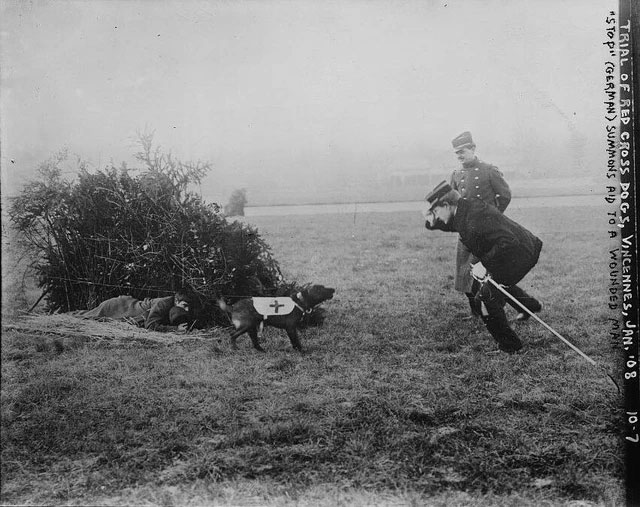
When World War I broke out, the dogs were sent to the front lines.
Eventually, the dogs were trained to do much more than that. They were trained to search for missing persons—Richardson paid unemployed locals to lie in the woods for the dogs to find. Next, they were trained to ignore dead bodies, wear gas masks, and even disregard those in German military uniforms.
When World War I erupted, dogs from England, France, and Germany were sent to the front lines. There, rescue dogs proved their worth by saving thousands of lives.
Mercy Dogs in World War I
When war broke out, men went to battle, and so did dogs. During the four years of brutal conflict, both sides utilized over 50,000 dogs for logistical purposes.

A soldier retrieving gauze from a British rescue dog.
The breeds primarily used included Airedale Terriers, German Shepherds, Doberman Pinschers, Boxers, and others. They were commonly referred to as rescue dogs, Red Cross dogs, or Mercy dogs, and their work truly began as soon as the soldiers ceased firing and fell on the battlefield.
They carried enough medical supplies on their backs for a wounded soldier to self-treat. When they detected someone severely injured, the dogs would pick up a piece of his uniform and run back to camp to alert others.
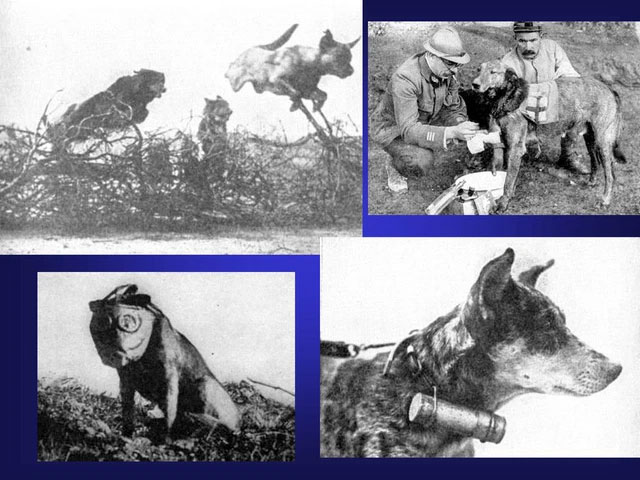
They carried enough medical supplies on their backs for a wounded soldier to self-treat.
Oliver Hyde wrote in his work The Work of the Red Cross Dog on the Battlefield: “For the wounded soldier in despair, the appearance of the Red Cross dog was always seen as a messenger of hope.”
“It was a pitch-black night with thick fog,” a 1915 report by German Sanitätshunde in the New York Times stated. “At the command, ‘Search for the wounded!’ the dogs dashed into the woods, and we followed them as quickly as possible… soon after, we heard barking… the dogs ran to greet us and guided us until we encountered a poor soldier lying moaning on the ground… The dogs worked throughout the long night until we had thoroughly searched the battlefield. Fourteen wounded individuals were found in the dark forest by our dogs.”
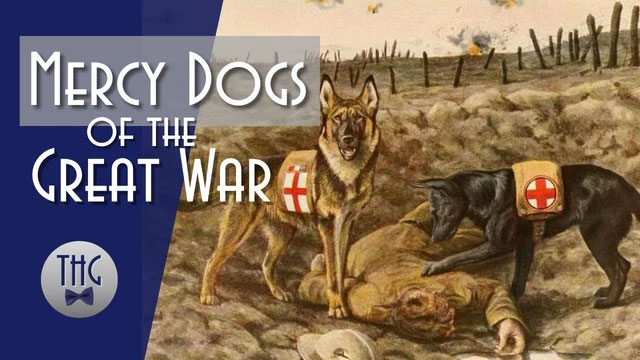
A wounded soldier found by a team of Mercy dogs.
A surgeon wrote: “Sometimes they led us to bodies that we thought were lifeless, but… they always found a spark for those souls struggling to find life,” another surgeon wrote: “It is their instinct; they work with instinctive power, far more effectively than human reasoning.”
On other occasions, rescue dogs chose to remain on the battlefield to comfort those who were about to die. They lay beside the fallen men so that they would not have to leave this world alone.
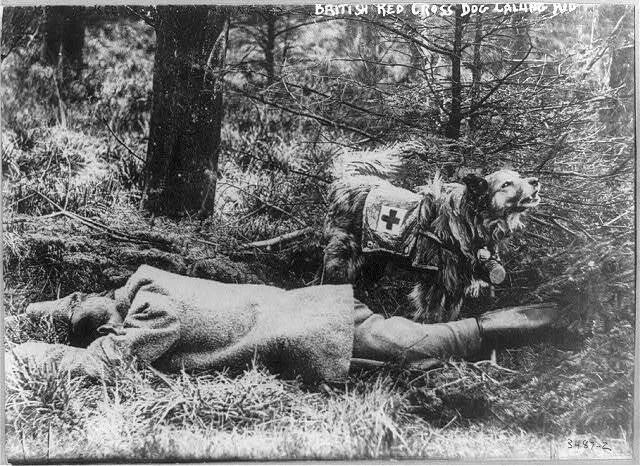
Rescue dogs chose to remain on the battlefield to comfort those who were about to die.
During the war, some dogs became quite famous for their accomplishments; however, the majority of rescue dogs operated anonymously, and many of them perished due to bombardments. By the time the conflict ended in 1918, approximately 7,000 rescue dogs had lost their lives on the battlefield.
The Lasting Legacy of War Dogs
As the 20th century began, humans increasingly utilized dogs in warfare. In World War II, dogs returned to the battlefield as combat dogs, sentries, messengers, and scouts. The United States alone employed about 20,000 dogs in its Army, Coast Guard, and Marines.
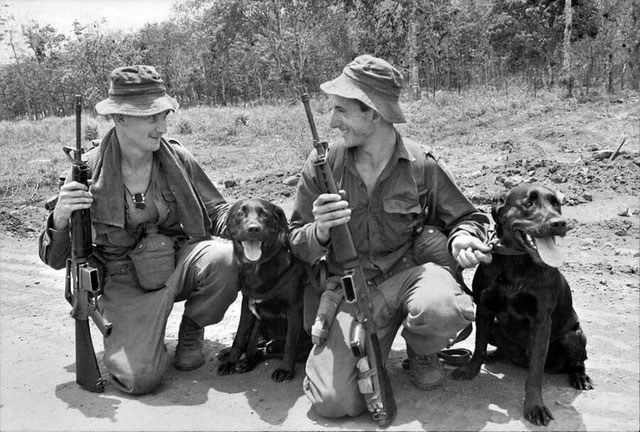
In World War II, dogs returned to the battlefield as combat dogs.
Dogs also served in later conflicts. In the wars in Iraq and Afghanistan, dogs used their keen sense of smell to detect IEDs.
Since World War II, dogs have also been used to provide comfort to soldiers. The Red Cross began using therapy dogs with recuperating soldiers after battles in the 1940s. Today, they help soldiers cope with PTSD (Post-Traumatic Stress Disorder).
In this way, the legacy of World War I rescue dogs will continue to endure.
For a wounded man, their presence meant that help would arrive. For a dying man, their soft fur, gentle breath, and beating heart meant that he would not have to die alone.
After all, dogs have always been man’s best friend.




















































